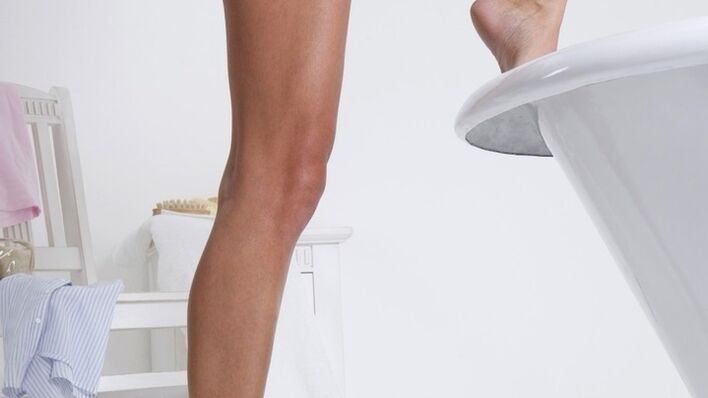
Growths such as light warts or spots on the legs that appear on the body and often disappear without treatment are papillomas.
The causative agent of the disease - human papillomavirus - enters the body from the outside, it is unusually widespread: it is carried by up to 80% of the world's population!
Such a high rate is due to the fact that the infection is tactile, making it almost impossible to control the spread of the virus.
Not all carriers attach importance to the disease and seek medical attention, so removal of papillomas at home is always important.
The nature of the papillomavirus
The insidious virus can be found anywhere: on the neck, armpits, under the breast, eyelids, abdomen, and genitals. In most cases, it is a benign formation. When a virus penetrates the cell chromosomes and becomes incorporated into the nucleus, it becomes malignant.
Before starting treatment, you should see a doctor to find out the nature of the virus and then choose an acceptable method.
Who is in danger
Modern man is haunted by chronic stress, illness and bad habits. Under such difficult conditions, the immune system breaks down, the gates open wide to various infections, and the papillomavirus is ready to attack. The main prerequisites for increasing the activity of the virus are:
- severe stress;
- pregnancy;
- serious illness;
- long-term use of drugs;
- old age;
- avitaminosis;
- bad habits: smoking, alcohol;
- high sexual activity without protection.
If at least one of the signs is present, exacerbation of the papillomavirus and unexpected skin growths are likely.

Routes of infection
Anyone can catch the virus. However, there are factors for which infection is almost unavoidable:
- transmission of the virus from mother to newborn;
- protected sexual contact with the carrier;
- tactile contact with the patient;
- during the sharing of household appliances;
- a visit to the pool;
- the penetration of the virus through the wounds on the skin.
The carrier of the papillomavirus can live for years and does not suspect its presence, and enlightenment usually occurs when the immune system is weakened. The virus, which is dormant in the base layer of the epithelium, then comes to the surface and takes the form of genital warts or flat plaques. Living with papillomas is neither comfortable nor aesthetic.
The most effective treatment is removal. It is not possible to simply cut the legs of the papillomas or try to cut them, but it can provoke active growth and proliferation of growths, becoming a malignant form.
At the first sign of infection, see a dermatologist or try alternative treatments.
Homemade recipes
With self-removal, only the superficial part is removed, the papillom nucleus is not affected. Dermatologist treatment should be performed to completely kill the virus. The most popular home removal methods are:
- Bloodweed. The corrosive juice of the plant burns the warts, the same can be done with papilloma. Two treatments are known: tearing off a sheet of celandine, smearing the papilloma with the spilled juice, and sealing it with plaster. Lubricate again every 2 days, after a while the papilloma dries out and falls off. The second method is to make a "cocktail" from celandine, chaga and string. Freeze in ice cube trays and apply to the growths three times a day for a few minutes.
- Kalanchoe pinnate is cut lengthwise, applied to the papillomas, bandaged and left overnight.
- "Garlic Cream". Chop the garlic and mix the resulting mass with any cream in a ratio of 1: 2. Then apply to a piece of bandage and secure to growth, glued with glue. Leave on for 3 hours, then wash with soap and water.
- Spas. Pour boiling water over half a bucket of green chestnut leaves and bring to a boil. Insist until 12 noon. Make a bath of the resulting broth by adding water to a comfortable temperature. The treatment lasts for 2 weeks, every other day with 7 procedures.
- Onionskin. Mix the dry shell in a bottle with vinegar. Combine the bottle with parchment or a thick cloth and keep in the dark for 2 weeks. Remove the peel, dry, and attach to the papillomas at night. In the morning, remove the bandage and soften the skin with an oily cream.
- Floral collection: 1 part tricolor violet, 1 part wormwood, 3 parts plantain, 2 parts clover flower, St. John's wort, calamus root and dill seeds. Pour boiling water over the collection so that 1 part of the collection is 7 parts boiling water. Insist sun, strain to 1 tbsp. spoon three times a day.
- Dandelion flower cologne. Fill a glass bottle with a dandelion head tightly. Pour triple cologne over it and let it cook in the dark for 2 weeks. Put in a dark bottle and store in a cool, dark place. Lubricate the papillomas by infusion 4-5 times a day until they disappear.
Smear the papillomas with the egg white left on the wall of the shell after pouring the eggs. Collect with a piece of bandage and apply to the papilloma.

Superstitions to help
Ancient, semi-mystical methods of removing papillomas have survived to this day. The most curious of them are:
- Knit silk fiber knots on the growths, insert the knotted yarn into a sliced potato and hide it where no one can find it. After a while, the potatoes rot and the papillomas disappear!
- Rub the growths with the halved potatoes: first with one half and then the other. Put the parties together, put them in a dark place and try to forget. After the potatoes peel off, the peel comes off.
- The most romantic way is the moonlight. In the light of the waning moon in the late evening, rub the papilloma on the surface illuminated by the moonlight and the growth will disappear.
Such treatment methods, which are unusual at first glance, have been practiced by healers in the old days and have had a positive effect, recorded with repeated repetitions.
Today, papillomavirus carriers have access to a variety of therapeutic treatments using tinctures, decoctions, and herbal juices. It is advisable to consult a doctor when choosing any method.















































































